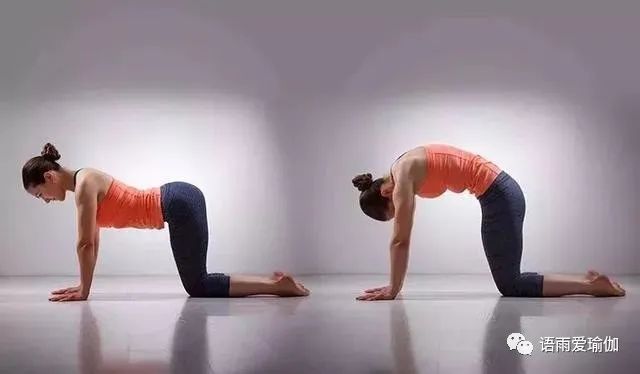The back bend is very challenging.

In yoga, this challenge is both physical and spiritual.

Back bending requires exercise to understand the limits and methods needed to build awareness and confidence.

Gradually build confidence.

Camel posture is a backward bending posture, which can stretch the front of the whole body and enhance the strength of the back.

In asana, the whole front is open, which challenges the backward bending ability that becomes fragile.

Explore this position by breathing, relaxing and exploring good ways.
With patience and awareness, we can build confidence.
We can gradually complete camel pose through the following yoga poses.
Start by launching the core in the boat.
Although you bend back to focus on your back, you are also stretching your abdominal muscles deeply.
Enter half boat or boat, strengthen your core and start abdominal activity.
Draw your shoulder blades close to each other and explore this feeling by opening your chest upward to build awareness.
Sit long in the center of the cushion and bend your knees; Lift your lower legs up and lean back; Slowly straighten your knees, close your legs together and tighten them, in a “V” shape with your body; Hold your hands flat in front, extend your spine upward, keep your body balanced, and look forward.
The bridge helps prepare the lower body, especially the hips, to adapt to the camel pose.
It can also help open the chest and calm the mind.
Practicing it can relieve tension before exploring deeper bends.
Lie on your back, put your hands on both sides of your body, open your feet the same width as your hips, point your toes straight ahead, bend your knees close to your hips, lower legs perpendicular to the ground, exhale, lift your hips up, press your shoulders and arms down to the ground, and lift your chest up.
You can put your palms under your body, or hold your ankles with both hands to keep your legs parallel, point your knees straight ahead, and lower legs perpendicular to the ground.
The classic flow of cat / cow cat and cow is a great way to warm your back and open your chest.
It is also a good place to explore the alignment and stability of your palm and lower body.
Kneel on your knees, put your hands on the cushion surface, open your knees the same width as your hips, open your hands the same width as your shoulders, and keep your toes, insteps, lower legs and knees close to the ground.
Your thighs are perpendicular to the ground directly below your hips, and your arms are perpendicular to the ground directly below your shoulders.
Separate your hands and fingers and compact the ground.
Cat pose: exhale, including chest arch back, chin looking for collarbone, eyes looking at navel, back up as far as possible, in an arc  cow pose: inhale, raise your head, straighten your chest, hips up, abdomen tighten and sink, low lunge now the back has warmed up, continue to open your hips, and deepen the spinal extension through low lunge and back bending.
When reaching up, keep your hands straight to avoid putting too much pressure on your lower back.
Start the downward dog pose, with your right foot between your hands, your back knee touching the ground, your hands on your right thigh, straighten your spine, open your chest, lift your hands up, keep breathing for several times, and then practice on the other side.
Backboard backboard requires you to lift and open the entire front, especially the chest and shoulders, to activate the core.
In a long sitting position, keep your legs together, put your hands on the back of your hips, point your fingertips directly in front, separate your five fingers, lift your hips upward, keep your spine, pelvis and legs in a straight line, and keep your hands directly below your shoulders.
It is important to prepare for camel pose by understanding its limitations and building awareness.
To ensure alignment and stability, hold your hips with both hands to support your upper body.
Sometimes we need yoga bricks to help us take the first step with confidence.
Place yoga bricks on the inside of your feet to help you practice better.
When you put your hand down, you can use a yoga brick as support to determine the distance to enter.
After establishing proper awareness of positive position, explore and practice the complete camel pose.
Keep kneeling, knees apart, toes pointing directly to the back of the body.
If you can’t use force to keep your instep close to the ground, you can choose to let your big toe press the ground instead.
Hold your hips with both hands.
Inhale to extend the spine, extend the front of the thighs, exhale, enter the back bend, and put your hands down to find your feet in turn.
Open the chest upward and move the shoulder blades upward.
Stare and keep the neck stable to avoid pressing the neck.
Keep your glutes soft and relaxed.
Keep breathing evenly for several times, then return your hands to both sides of your hips, slowly bring your body back, and return to worship or baby style to relax.
Entering camel pose safely requires confidence and practice.
As you begin to explore posture and gain confidence, observe how this confidence affects your practice and shifts into your daily life…


